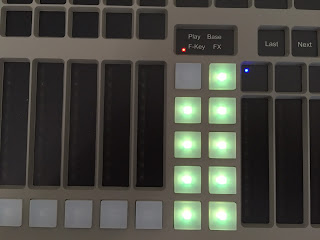Martin Professional has built many great features into their lights, yet some go unnoticed or are misunderstood. All Martin LED fixtures operate at a high refresh rate (generally >1200hz) and are designed for use with HD/high-speed video cameras. However, there is also an additional user setting called "Video Tracking" that provides an optimization for dimming and color changing when using Martin LED fixtures with a video based control system.
The video tracking feature will change the internal methodology used to control the dimming of the LEDs. This is important ONLY when using Martin LED products to display a video signal (pixel mapping). In normal use, the fixture processes the DMX signal it receives, tracking (or smoothing out) changes in values in order to ensure smooth fading between colors and/or intensities. This signal processing takes fractions of a second and is normally invisible, but if the fixture is used to display video the processing can interfere with video response times.
 In situations where a video image is controlling intensity and/or color it is advised to enable video tracking. If you are using pixel mapping from a console or media server or even a Martin P3 Processor to convert a video file to DMX values then it is suggested that you utilize the video tracking feature. When enabled, the fixture will not ‘smooth out’ DMX input but instead will
snap instantly when a DMX value changes. This leads to the best representation of the color changes coming from the video file as the DMX value changes correlate instantly without smoothing.
In situations where a video image is controlling intensity and/or color it is advised to enable video tracking. If you are using pixel mapping from a console or media server or even a Martin P3 Processor to convert a video file to DMX values then it is suggested that you utilize the video tracking feature. When enabled, the fixture will not ‘smooth out’ DMX input but instead will
snap instantly when a DMX value changes. This leads to the best representation of the color changes coming from the video file as the DMX value changes correlate instantly without smoothing. For best results, Martin recommends that you enable video tracking during video display control and disable it (the default setting) during normal DMX control. The video tracking feature is found on MAC Quantum Wash, MAC Quantum Profile, MAC Aura XB, and Atomic 3000 LED fixtures. The setting can be adjusted either via DMX (found in the control channel) or via the fixture's menu system. Note: The video tracking feature is referred to as "video dimming" on the MAC Aura XB.
With a proper understanding of the internal software of Martin LED products, any programmer or designer can optimize the fixtures for control from video or DMX.


















































